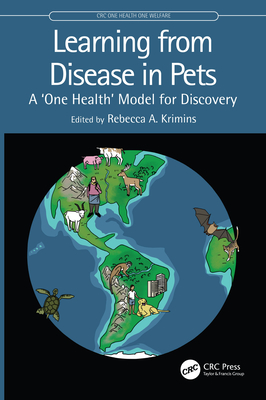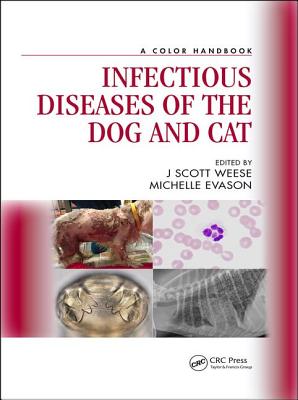Animal Models in Research: Principles and Practice
Vijayakumar Sreelatha, Harikrishnan, Patel, Satish, Nagarajan, Perumal
- 出版商: Springer
- 出版日期: 2024-04-04
- 售價: $10,750
- 貴賓價: 9.5 折 $10,213
- 語言: 英文
- 頁數: 640
- 裝訂: Hardcover - also called cloth, retail trade, or trade
- ISBN: 9819700477
- ISBN-13: 9789819700479
海外代購書籍(需單獨結帳)
相關主題
商品描述
This book describes the development of animal models widely used in biomedical research using step-wise instructions and photographs. Showcasing a wide range of species from zebra fishes, birds, rodents, rabbits, dogs, and pigs, the book includes detailed methodology on how to work with these species and to develop various models. The animal models in neurology including stroke, Alzheimer's disease, Parkinson's disease, and Schizophrenia; Animal models in cancer research, sleep disorders, and cardiovascular diseases are described to meet the understanding of researchers who plan to replicate these models in their laboratories. In depth detailing on the development of targeted gene knockouts and transgenics, implantation models that are used in toxicology studies, and pharmacokinetic studies in pigs and dogs are a highlight. Further, the book describes pharmacologic, chemically induced, surgically induced, microbiologically induced, infectious models, models for neurobehavioral studies, oncology research, and pain research. The book has dedicated sections on anesthesia and analgesia and teaches procedures like venous cut-downs and cannulations in pigs and dogs, and endotracheal intubation, mechanical ventilation and thoracotomy in rodents and will serve as a self-training tool. Concepts in the field of animal model development are explained using examples. Sample size selection, study design, and statistical evaluation of experiments involving laboratory animals are explained to enable young researchers to practically understand the nuances. This book will be a valuable tool for academicians, students, scientists, and veterinarians and will benefit equally who are new to the field and who are already working with laboratory animals.
商品描述(中文翻譯)
這本書描述了在生物醫學研究中廣泛使用的動物模型的發展,並提供了逐步的指導和照片。書中展示了從斑馬魚、鳥類、啮齒動物、兔子、狗和豬等多種物種,包括了如何與這些物種合作以及開發各種模型的詳細方法。書中描述了神經學中的動物模型,包括中風、阿茲海默症、帕金森病和精神分裂症;癌症研究、睡眠障礙和心血管疾病的動物模型,以滿足計劃在實驗室中複製這些模型的研究人員的理解。書中詳細介紹了有針對性的基因敲除和轉基因的發展,毒理學研究中使用的植入模型,以及豬和狗中的藥物動力學研究的亮點。此外,書中還描述了藥理學、化學誘導、手術誘導、微生物誘導、感染模型、神經行為學研究、腫瘤學研究和疼痛研究的模型。書中有專門的部分介紹了麻醉和止痛,並教授了豬和狗中的靜脈切開和導管技術,以及啮齒動物中的氣管插管、機械通氣和胸腔切開技術,這將成為一個自學工具。書中通過例子解釋了動物模型發展領域的概念。書中解釋了樣本大小選擇、研究設計和涉及實驗動物的統計評估,以使年輕研究人員能夠實際理解細微之處。這本書將成為學者、學生、科學家和獸醫師的寶貴工具,同樣對於新手和已經在實驗動物領域工作的人都有益處。
作者簡介
Harikrishnan Vijayakumar Sreelatha is a veterinarian, who graduated from the College of Veterinary and Animal Sciences, Mannuthy, Kerala, India and he joined Sree Chitra Tirunal Institute for Medical Sciences and Technology to start working with porcine models in a drug-eluting stent pre-clinical safety and efficacy evaluation programme in 2003. During this period, he also worked on ovine and caprine models as well. Since 2005, he started to work with rodents and rabbits for various proof of concept projects. In 2009, he received the International Young Scientist Award offered by the Japanese Association of Laboratory Animal Science for his work in hindlimb ischemic rabbit model. He joined for a Master's programme in laboratory animal science at the Department of Veterinary Disease Biology, University of Copenhagen, Denmark with scholarships and travel grants from Laboratory animals Ltd. United Kingdom, UFAW, UK, Federation of European laboratory Animal Science Associations (FELASA), EU, Scandinavian (SCAND-LAS), Swiss (SGV), and British Laboratory Animal Science Associations awards during 2010-14. Later, he joined the PhD programme at the Department of Experimental Medicine, University of Copenhagen in 2016-23. He is currently a serving member of the Committee for the Control and Supervision of Experiments on Animals (CCSEA), New Delhi, which is the statutory body regulating animal experimentation in India. He also served as a working group member to revise the syllabus for minimum standards for Veterinary Practice regulations for Laboratory Animals formed by The Veterinary Council of India, a statutory body and a member of the Health Product Screening committee of Indian Council of Medical Research (ICMR), Government of India to evaluate Phase-I clinical trials readiness of medical products and drugs. He has several International academic grants, projects and scholarships and has widely published in laboratory animal science and medicine and has over 55 peer-reviewed publications, and over 8 book chapters. His current area of interest is refinement of animal models and refinement of rodent care, handling, and housing standards.
Dr. Satish Patel is working as general manager and head of Animal Research Facilities, Zydus Research Centre, Ahmedabad, Gujarat, India. He is a veterinarian and done his Ph.D in veterinary pharmacology and toxicology from Anand Agricultural University, Gujarat, India. He has been working with laboratory animals for more than 24 years. He has performed key role in establishing many laboratory animal facilities at different organizations, and among these few are GLP and AAALAC accredited. As part of research and development activities that he is leading in Zydus Research Centre, he travels and works with many foreign CROs in the USA, Canada, and Europe for preclinical studies including veterinary Bio availability and Bio equivalence studies. He has also developed many preclinicaldisease models, in different therapeutic areas like diabetes, inflammation, arthritis, dyslipidemia, cancer etc. using different novel methodologies and techniques. He has enormous knowledge and experience in care, management, breeding and regulatory experimentation of laboratory animals including inbreds, outbreds, mutants, transgenics (genetically modified), immune-deficient and humanized animal models, dogs and non-human primates. He has also to his credit, a few innovative products which are commercialized and, are in the market, where he has been involved in basic research and development. He also worked for B.V. Patel Pharmaceutical Education Research & Development (B.V. PERD) Centre, Hester Bioscience ltd, and Cadila Pharmaceutical Pvt ltd, Ahmedabad in the field of biomedical research and development. He has undergone several training programs on laboratory animal management, health monitoring and animal model development. He served as a working group member to revise the syllabus for minimum standards for veterinary practice regulations for laboratory animals formed by The Veterinary Council of India (VCI), a statutory body. He has published more than 25 research publications in national and international peer-reviewed journals. He is also member of few societies of veterinary science and laboratory animal science. His current area of interest is improvement of current practices of laboratory animal care and management and refining methodologies in animal experimentation.
Dr. Perumal Nagarajan is working as head, scientist at laboratory animal facility, National Institute of Immunology, New Delhi, India. Being a veterinarian, he has been working on laboratory animals for more than 20 years. He has vast knowledge and expertise in the care, management, breeding and medicine of laboratory animals including genetically modified animals, immunodeficient animal models, humanized animal models and non-human primates that are beingused in research. Before joining NII, he worked at Central Drug Research Institute (CDRI) and the National University of Singapore (NUS). He had undergone diverse training in laboratory animals including imaging modalities and microsurgery abroad. His research interest is in animal models for various diseases and in particular metabolic diseases. He has published more than 50 research articles in peer-reviewed international journals authored book chapters and edited the book "Essentials of Laboratory Animal Science: Principles and Practices" Springer. He is also serving as a reviewer for various international journals and he is a member of several national and international scientific societies related to laboratory animal science.
作者簡介(中文翻譯)
Harikrishnan Vijayakumar Sreelatha是一位獸醫,畢業於印度喀拉拉邦曼努西獸醫和動物科學學院,並於2003年加入Sree Chitra Tirunal醫學科學與技術研究所,開始在藥物洗脫支架預臨床安全性和有效性評估計劃中使用豬模型進行研究。在此期間,他還研究了羊和山羊模型。自2005年以來,他開始使用鼠和兔進行各種概念驗證項目的研究。2009年,他因在兔下肢缺血模型方面的工作而獲得了日本實驗動物科學協會提供的國際青年科學家獎。他在2010年至2014年期間獲得了來自英國實驗動物有限公司、UFAW、歐洲實驗動物科學協會(FELASA)、斯堪的納維亞(SCAND-LAS)、瑞士(SGV)和英國實驗動物科學協會的獎學金和旅行補助金,並在丹麥哥本哈根大學獸醫疾病生物學系攻讀了實驗動物科學碩士學位。後來,他於2016年至2023年期間加入了哥本哈根大學實驗醫學系攻讀博士學位。他目前是印度動物實驗控制和監督委員會(CCSEA)的成員,該委員會是印度動物實驗的法定機構。他還擔任了一個工作小組成員,以修訂印度獸醫委員會制定的實驗動物最低標準的課程大綱,該委員會是一個法定機構,並且是印度醫學研究委員會(ICMR)健康產品篩選委員會的成員,該委員會評估醫療產品和藥物的一期臨床試驗準備情況。他獲得了多個國際學術獎助金、項目和獎學金,並在實驗動物科學和醫學領域廣泛發表了55多篇同行評審的論文和8篇專書章節。他目前的研究興趣是動物模型的改進以及鼠類護理、處理和住房標準的改進。
Satish Patel博士是印度古吉拉特邦艾哈邁達巴德Zydus研究中心的動物研究設施總經理和負責人。他是一位獸醫,並在古吉拉特邦阿南德農業大學獸醫藥理學和毒理學專業獲得博士學位。他已經從事實驗動物工作超過24年。他在不同組織建立了許多實驗動物設施,其中一些設施獲得了GLP和AAALAC的認證。作為Zydus研究中心研究和開發活動的一部分,他與美國、加拿大和歐洲的許多外國CRO合作進行臨床前研究,包括獸醫生物利用度和生物等效性研究。他還使用不同的新方法和技術在不同治療領域(如糖尿病、炎症、關節炎、血脂異常、癌症等)開發了許多臨床前疾病模型。他在實驗動物的護理、管理、繁殖和法規實驗方面擁有豐富的知識和經驗,包括純種、雜交、突變、轉基因(基因改造)、免疫缺陷和人類化動物模型、狗和非人類靈長類動物。他還開發了一些創新產品,這些產品已經商業化並在市場上銷售,他參與了基礎研究和開發工作。他還接受了多個實驗動物管理、健康監測和動物模型開發的培訓課程。他曾擔任一個工作小組成員,以修訂印度獸醫委員會制定的實驗動物最低標準的課程大綱。











